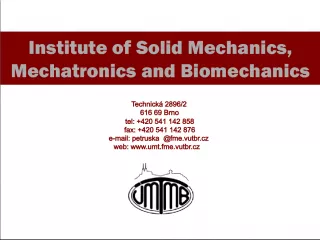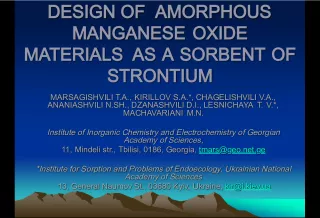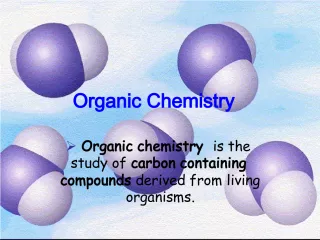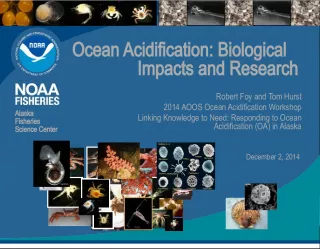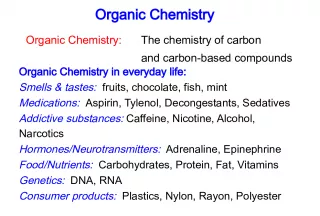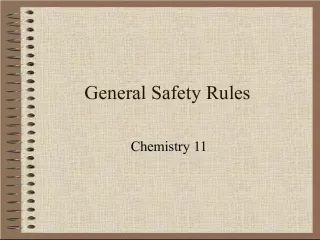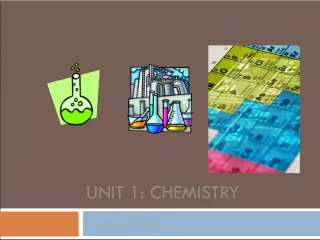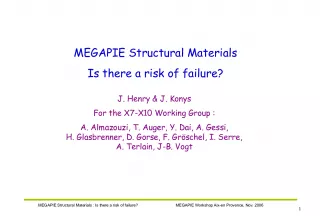Defects in Crystalline Materials: Impacts on Solid State Chemistry and Catalysis


This lecture covers the classification and impacts of point defects in crystalline materials, including intrinsic and extrinsic defects, ionic conductivity, and solid state electrolytes. The applications of these defects in fast ion conductors and lithium-ion batteries will also be discussed.
- Uploaded on | 0 Views
-
 evelynkoss
evelynkoss
About Defects in Crystalline Materials: Impacts on Solid State Chemistry and Catalysis
PowerPoint presentation about 'Defects in Crystalline Materials: Impacts on Solid State Chemistry and Catalysis'. This presentation describes the topic on This lecture covers the classification and impacts of point defects in crystalline materials, including intrinsic and extrinsic defects, ionic conductivity, and solid state electrolytes. The applications of these defects in fast ion conductors and lithium-ion batteries will also be discussed.. The key topics included in this slideshow are materials chemistry, catalysis, solid state chemistry, point defects, ionic conductivity, lithium-ion batteries,. Download this presentation absolutely free.
Presentation Transcript
1. CHE-30043 Materials Chemistry & Catalysis : Solid State Chemistry lecture 4 Rob Jackson LJ1.16, 01782 733042 r.a.jackson@keele.ac.uk www.facebook.com/robjteaching @robajackson
2. Plan of lecture Defects in crystalline materials Classification of point defects Intrinsic and extrinsic defects Ionic conductivity in crystalline materials Solid state electrolytes Fast ion conductors Lithium ion batteries che-30043 lecture 4 2
3. che-30043 lecture 4 3 Defects in crystalline materials Crystalline materials are not perfect above 0K, since at finite temperatures atoms can move from their lattice positions. Also, impurities are nearly always introduced during crystal growth (intentionally or not!) We will be concentrating on point defects, which affect isolated atom sites, and have a significant effect on the chemistry of the crystal.
4. che-30043 lecture 4 4 Classification of point defects First, distinguish between intrinsic and extrinsic defects. Intrinsic defects do not affect the chemical composition of the crystal, and include: vacancies atoms missing from the lattice interstitials atoms at non-lattice positions
5. che-30043 lecture 4 5 Classification of intrinsic defects Frenkel defects occur when an atom moves from a lattice site to an interstitial site. (this will be illustrated) Schottky defects occur when a formula unit of vacancies is created. Note that this is still a neutral defect since both cation and anion vacancies are created (e.g. Na + and Cl - vacancies in NaCl). (this will be illustrated)
6. che-30043 lecture 4 6 Which intrinsic defects form? - 1 Frenkel defects occur on one or other sublattice in the crystal (i.e. in MX, either the M + or X - ions are involved). A Frenkel defect is called a Frenkel pair it is the combination of a vacancy and an interstitial. Frenkel pair formation depends on the availability of space in the lattice for interstitial formation.
7. che-30043 lecture 4 7 Which intrinsic defects form? - 2 Schottky defects will normally form when there is insufficient space in the lattice for interstitials. e.g. the rock salt structure very little space, so Schottky defects predominate. However, in the fluorite structure there are alternate unoccupied cube centres and Frenkel defects can form.
8. che-30043 lecture 4 8 Extrinsic defects Impurity atoms present in crystals are called extrinsic defects . They may be there deliberately, or as a consequence of the preparation process. Examples are K + ions in NaCl Charge must always be balanced e.g. if Ca 2+ substitutes for Na + in NaCl, a Na + vacancy or Cl - interstitial must be formed.
9. che-30043 lecture 4 9 Ionic Conduction Mechanisms The presence of point defects makes it possible for ions to move through a structure. There are two common mechanisms that are adopted, the vacancy mechanism and the interstitial mechanism. These mechanisms will be illustrated but see the diagrams in Smart and Moore for an alternative view!
10. che-30043 lecture 4 10 How is ionic conductivity defined? Ionic conductivity ( ) is defined as follows: = n Ze where n is the number of charge carriers (defects per unit volume), Ze is their charge (e is the electron charge), and is the mobility of the ions a measure of the speed with which they move through the lattice. So depends on (i) the number of available defects (ii) the charge of the defect species, and (iii) how easily the ion can move through the lattice.
11. che-30043 lecture 4 11 Some conductivity values conduction type material conductivity ( ohm -1 m -1 ) ionic conductors ionic crystals 10 -16 10 -3 solid electrolytes 10 -1 10 3 liquid electrolytes 10 -1 10 3 electronic conductors metals 10 3 10 7 semiconductors 10 -3 10 4 insulators < 10 -10
12. che-30043 lecture 4 12 Solid Electrolytes Solid electrolytes are ionic crystals with a sufficient volume of defects to be able to act like a liquid electrolyte. Example LiI (rock salt structure, Schottky defects) has sufficient vacancies in its crystal structure to enable Li + ions to move freely. It was one of the first solid electrolytes to be used in the design of lithium batteries.
13. che-30043 lecture 4 13 Lithium batteries: how they work - 1 Lithium batteries are made up of: a lithium anode, iodine cathode (iodine embedded in a polymer, poly-2-vinyl-pyridine). a lithium iodide electrolyte. Li + ions can pass through the electrolyte by the vacancy mechanism, and the valence electrons go round the external circuit. A diagram will be drawn in the lecture.
14. che-30043 lecture 4 14 Lithium batteries: how they work - 2 The following cell reaction occurs: anode: 2Li(s) 2Li + + 2e - cathode: I 2 (s) + 2e - 2I - overall: 2Li(s) + I 2 (s) 2LiI(s) Note the same principal applies to different Li salts (e.g. Li 2 CO 3 ). Lithium batteries have been replaced by lithium ion batteries, considered later.
15. che-30043 lecture 4 15 Fast ion conductors Fast ion conductors are particular examples of solid electrolytes. We will consider some examples and show how they work. There are two mechanisms: (i) structures which have unoccupied lattice sites without defects being present. (ii) structures whose conductivity occurs because of defects.
16. che-30043 lecture 4 16 Example 1 - -AgI - 1 The structure of -AgI is such that there are more possible sites for the Ag + ions than needed (see Smart and Moore for diagrams). Structure is BCC with I - anions at the BCC sites. Conductivity occurs because the Ag + ions can easily move through the lattice via unoccupied lattice sites. Conductivity is 131 ohm -1 m -1 (high).
17. che-30043 lecture 4 17 Example 1 - -AgI - 2 We can relate the high conductivity to properties of the structure: Low charge on the Ag + ions Low coordination of the Ag + ions Many vacant Ag + ion sites However the -phase of AgI only exists above 146 C, limiting its use.
18. che-30043 lecture 4 18 More examples of fast ion conductors -AgI can be modified to lower the temperature at which fast ion conduction occurs. Partial replacement of Ag by Rb results in RbAg 4 I 5 , which has an ionic conductivity of 25 ohm -1 m -1 at room temperature. Materials with the fluorite structure should have good potential as fast ion conductors, since there are many interstitial sites.
19. che-30043 lecture 4 19 Zirconia and stabilised zirconia Zirconia, ZrO 2 exists naturally as the mineral baddeleyite, with a monoclinic structure. On heating, the structure transforms first to a tetragonal phase, and then, at 1600 C, to a cubic fluorite phase, where it would be expected to have good ionic conduction properties. It is possible to stabilise the structure in the cubic phase at room temperature by adding, e.g. 15 mol % CaO.
20. che-30043 lecture 4 20 Stabilised zirconia Addition of CaO (or other oxides, including Y 2 O 3 ), produces a cubic fluorite phase. The structure is a good ion conductor because of the interstitial sites, but addition of the stabiliser ions improves this further. If Ca 2+ is substituted for Zr 4+ , the charge has to be compensated. This can be achieved by creating O 2- vacancies so oxygen ion conduction can occur. Stabilised zirconia is widely used in fuel cells.
21. che-30043 lecture 4 21 Oxygen ion conduction in CaO stabilised zirconia - summary The CaO can be added up to 28 mol%. Addition of the CaO stabilises the structure in the cubic phase at room temperature. The interstitial sites mean oxygen ion conduction will be possible via the interstitial mechanism. Further oxygen vacancy sites are created to compensate for the charge imbalance caused by Ca 2+ substituting for Zr 4+ . This enhances conduction further.
22. che-30043 lecture 4 22 Lithium ion batteries Lithium batteries were not always ideal to work with, mainly because of the reactivity of the lithium metal! Lithium ion batteries were developed in the 1990s, mainly by Sony, to provide reliable rechargeable batteries. They are now used routinely in laptop computers, mobile phones, mp3 players etc.
23. che-30043 lecture 4 23 How lithium ion batteries work (i) Their design is based on intercalation compounds (compounds formed by the reversible addition of guest ions to a host lattice). The electrolyte is a conducting polymer such as polyacetylene: n (H-C C-H)
24. che-30043 lecture 4 24 How lithium ion batteries work (ii) The anode is composed of Li embedded in graphitic carbon, forming Li x C 6 . The cathode is made from Li combined in an intercalation compound with a transition metal oxide like CoO2, forming Li x CoO 2 . The electrolyte is a conducting polymer.
25. che-30043 lecture 4 25 How lithium ion batteries work (iii) The Li + ions move between the two intercalation compounds. At the anode, Li x C 6 = xLi + + 6C + xe - At the cathode: xLi + + CoO 2 (S) + xe - = Li x CoO 2 The Li + ions move through the electrolyte while the electrons go around the external circuit. The process is reversed on charging. See diagram on the next slide.
26. Lithium ion battery diagram che-30043 lecture 4 26
27. Improvements to the lithium ion battery There is much current research on improving the performance of lithium batteries. These have focussed on using nanostructured materials for the cathode and anode. The rationale is that the hopping distance for the Li + ions is reduced. che-30043 lecture 4 27
28. Improvements to anode materials che-30043 lecture 4 28 Journal of New Materials for Electrochemical Systems, 15(4) 2012, 233-236
29. Nanoporous cathode materials che-30043 lecture 4 29
30. Summary of lecture Defects in solids have been introduced and classified Ion migration mechanism have been discussed. Applications to fast ion conductors and battery materials have been described. che-30043 lecture 4 30
